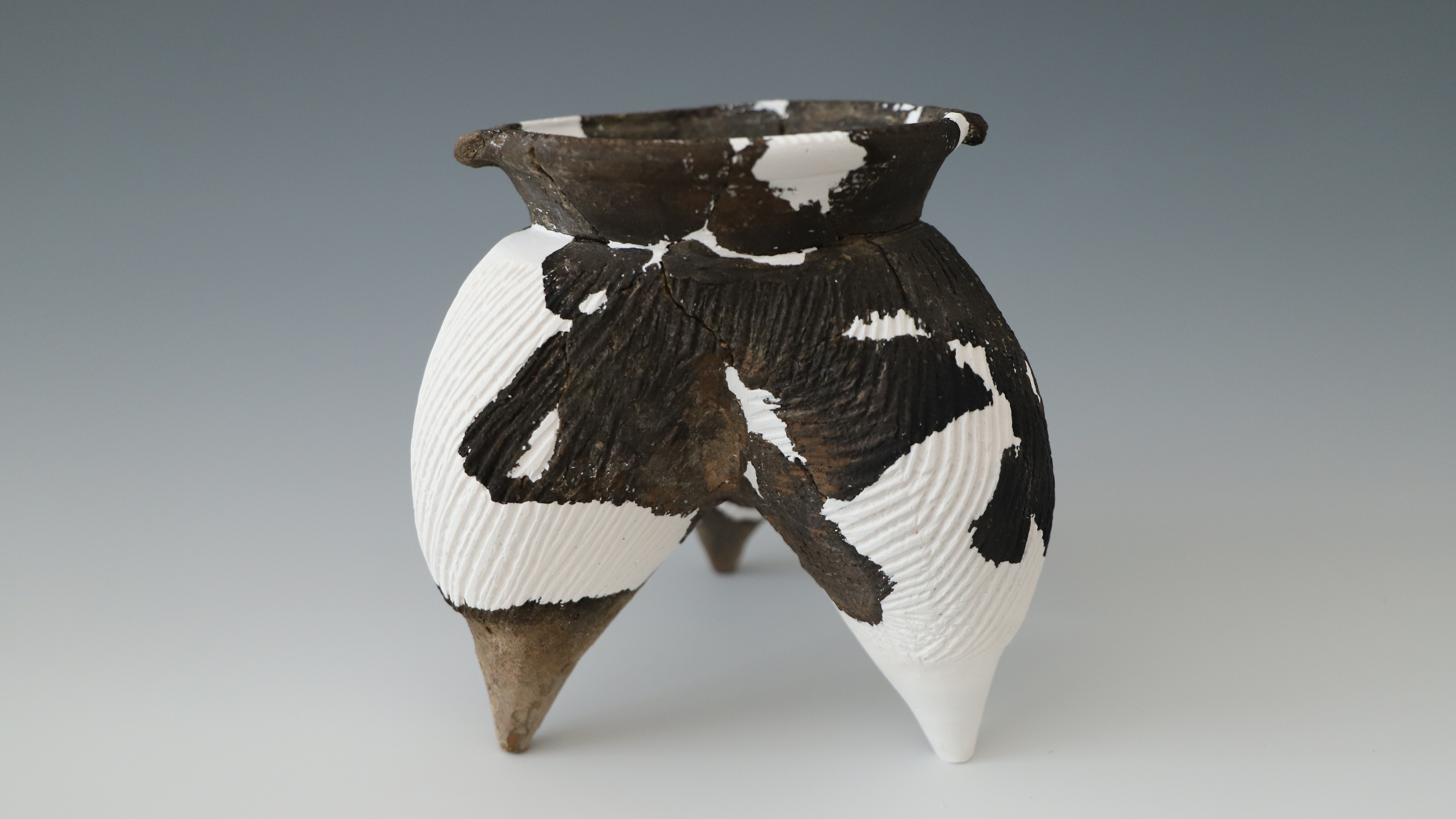
Earthenware unearthed in Bicun Site in Xingxian County of Lyuliang, Shanxi Province, China. /CGTN
Earthenware unearthed in Bicun Site in Xingxian County of Lyuliang, Shanxi Province, China. /CGTN
The study of Chinese civilization and early states, particularly the Xia culture, is an important proposition in Chinese archaeology. There are several gaps in the study of Xia Dynasty (2070 BC-1600 BC) history, and the lack of written records makes it even more essential to validate it as a legitimate history through archaeological findings.
The National Cultural Heritage Administration convened a project progress conference in Beijing this Friday to tell of four key archaeological accomplishments, focusing on the archaeological finds and recent advances in the study of the prehistoric civilization process and culture of the Xia Dynasty and Shang Dynasty (1600 BC–1045 BC).
In 2018, the National Cultural Heritage Administration deployed 11 programs relating to the study of civilizational processes and early states, as well as supported over 200 active archaeological excavation projects, yielding significant results. The meeting selected four projects that have made significant work progress this year for the announcement: the Houchengzui site in Qingshuihe County, Bicun Site in Xingxian County, Erlitou Site in Yanshi County, and Shang Dynasty tombs in Zhengzhou Shang City.
Houchengzui site in Qingshuihe County
The Houchengzui site, located on the north bank of the Hunhe River in Qingshuihe County, Hohhot, is around 4,000 years old and the biggest Late Neolithic stone city site ever discovered in Inner Mongolia's south-central area.

Aerial view of the Houchengzui stone city in Qingshuihe County of Hohhot, Inner Mongolia Autonomous Region, China. /CGTN
Aerial view of the Houchengzui stone city in Qingshuihe County of Hohhot, Inner Mongolia Autonomous Region, China. /CGTN
Since 2021, excavations have concentrated on the Houchengzui stone city's outermost defensive system, comprising trenches of the Wengcheng (Barbican), the outer Wengcheng, the Mamian (An ancient Chinese city wall), the platform foundation, and other components.
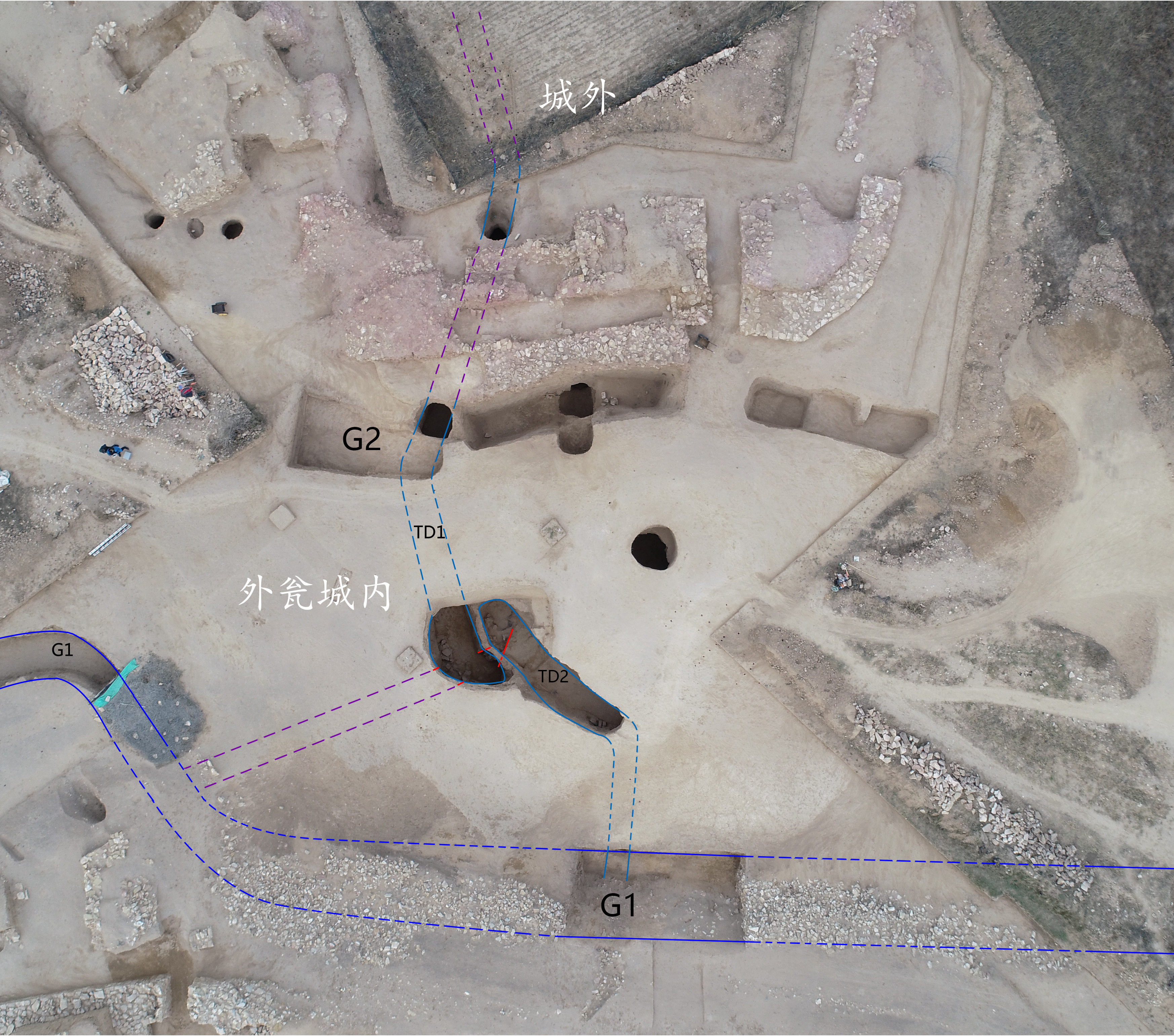
Arial photo of the underground passages discovered in Houchengzui site in Qingshuihe County, Hohhot of Inner Mongolia Autonomous Region, China. /CGTN
Arial photo of the underground passages discovered in Houchengzui site in Qingshuihe County, Hohhot of Inner Mongolia Autonomous Region, China. /CGTN
Two underground passages were discovered beneath the outer Wengcheng, each with attacking and defensive roles, further revealing the intricate and comprehensive city defense system of Houchengzui stone city and provided new clues for the study of prehistoric urban defense systems in northern regions of China.
Bicun Site in Xing County
The site of Bicun, a huge stone city settlement of the Longshan Period also dating from around 4,000 years ago, is located in the north of Bicun Village, Xingxian County of Lyuliang, Shanxi Province, where the Yellow River and its tributary Weifen River meet.
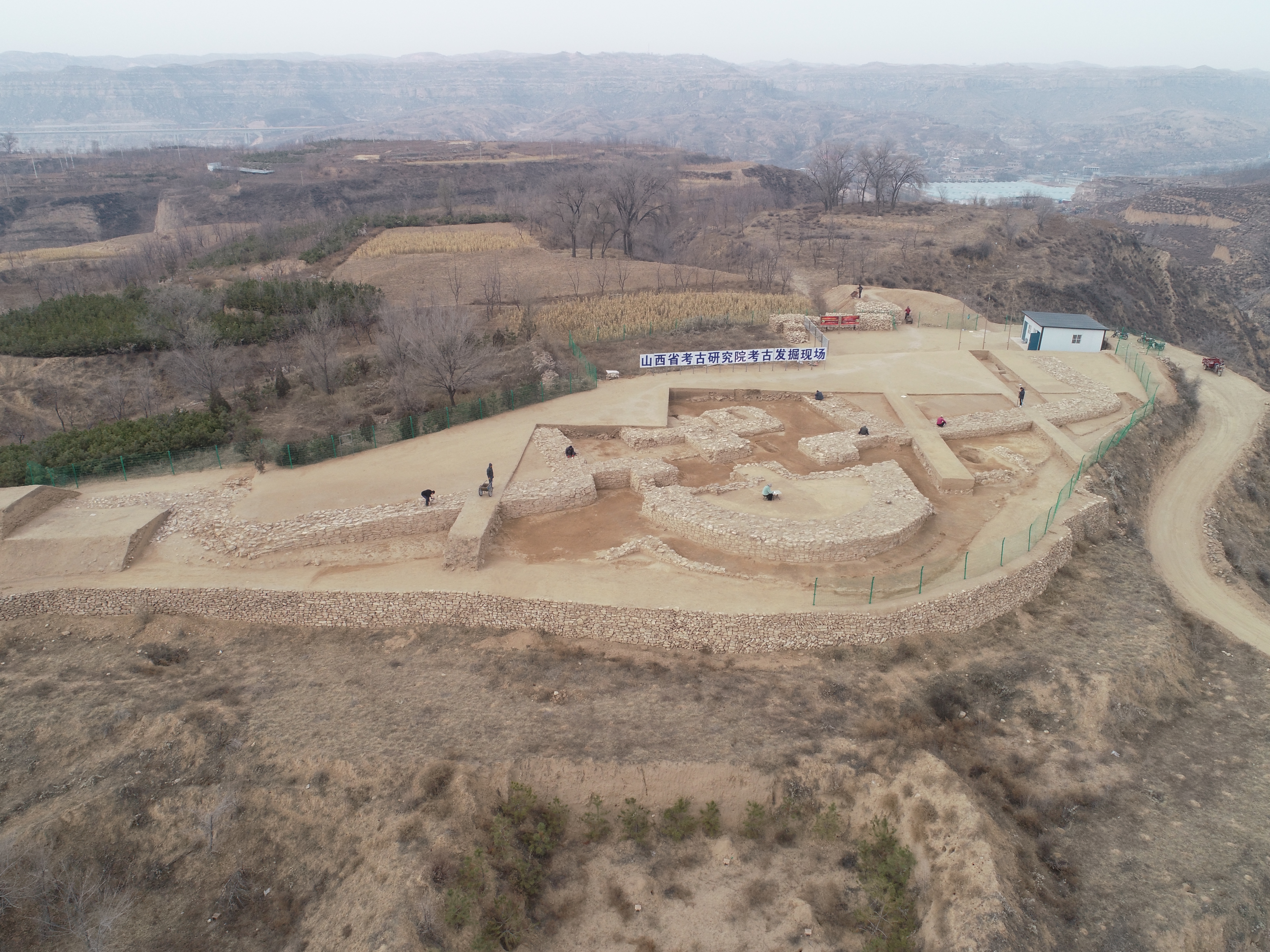
East City Gate site of Bicun Site, Xingxian County of Lyuliang, Shanxi Province, China. /CGTN
East City Gate site of Bicun Site, Xingxian County of Lyuliang, Shanxi Province, China. /CGTN
The archaeological work at Bicun Site illustrates the magnificent scale and construction of the fortification facilities at its East City Gate site, displaying the distinctive gate form of a class of stone city sites in the Hetao Region (a C-shaped region in northwestern China).
The East City Gate site's fortification facilities, the discovered core building complex area, and the remains of fortification facilities reveal the urban structure of the Bicun site, highlighting the Bicun site's important strategic position in controlling a major transportation route on the Jin-Shaan plateau (present-day northern Shaanxi and northwestern Shanxi areas).
In addition, the Bicun site's prominent strategic location, which controls both banks of the Yellow River, and the city site's layout, that either features multiple defense systems, strongly suggest that it was a gateway city on the banks of the Yellow River during the Longshan period, controlling the important route between western China and the Central Plains.
The Erlitou Site, which dates back around 3,500 years and covers an area of 3 million square meters, is located along the banks of the Luohe River in Yanshi County, Henan Province. Academics believe it was a late Xia Dynasty capital city site.
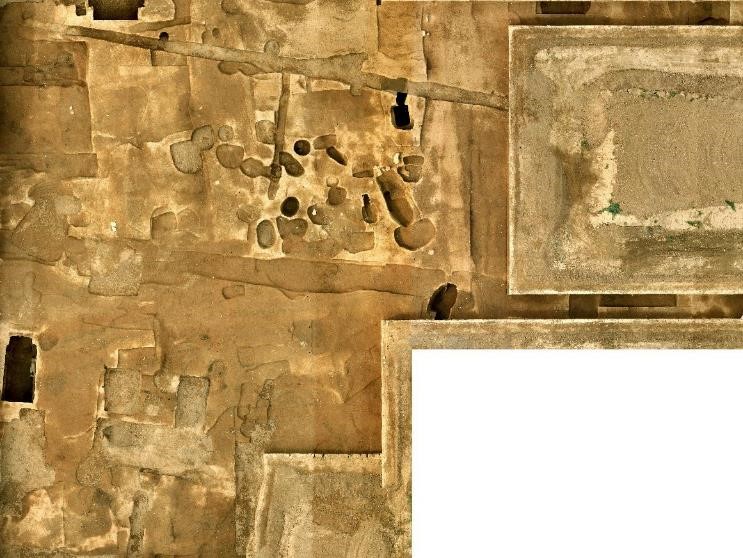
Arial photo of the Erlitou site in in Yanshi County of Henan Province, central China. /CGTN
Arial photo of the Erlitou site in in Yanshi County of Henan Province, central China. /CGTN
Archaeological work at the Erlitou site has defined the multi-grid urban structure, and excavations have discovered several urban roadways and rammed earth roads on both sides of the highways since 2021.
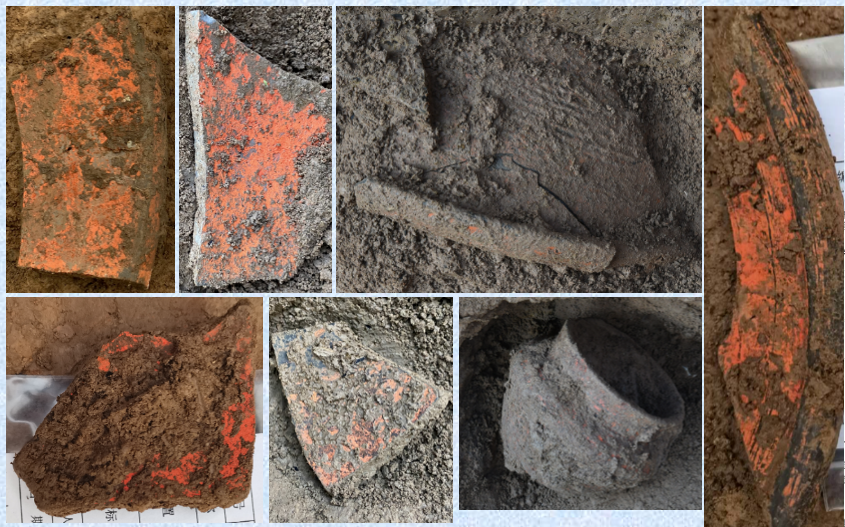
pottery remains discovered at the northern edge of the Erlitou site in in Yanshi County of Henan Province, central China. /CGTN
pottery remains discovered at the northern edge of the Erlitou site in in Yanshi County of Henan Province, central China. /CGTN
Rich pottery-making remnants were discovered near the site's northern edge, containing many stages of the pottery-making process. In the southwest corner, a 100-square-meter bone and horn processing workshop was discovered, as well as a large number of bone and horn relics demonstrating various aspects of bone and horn processing. To the west of the ritual area, a large Erlitou culture residence site was discovered, and high-profile burials with copper and jade ritual objects were discovered in the compound of the dwelling site.
Shang Dynasty tombs in Zhengzhou
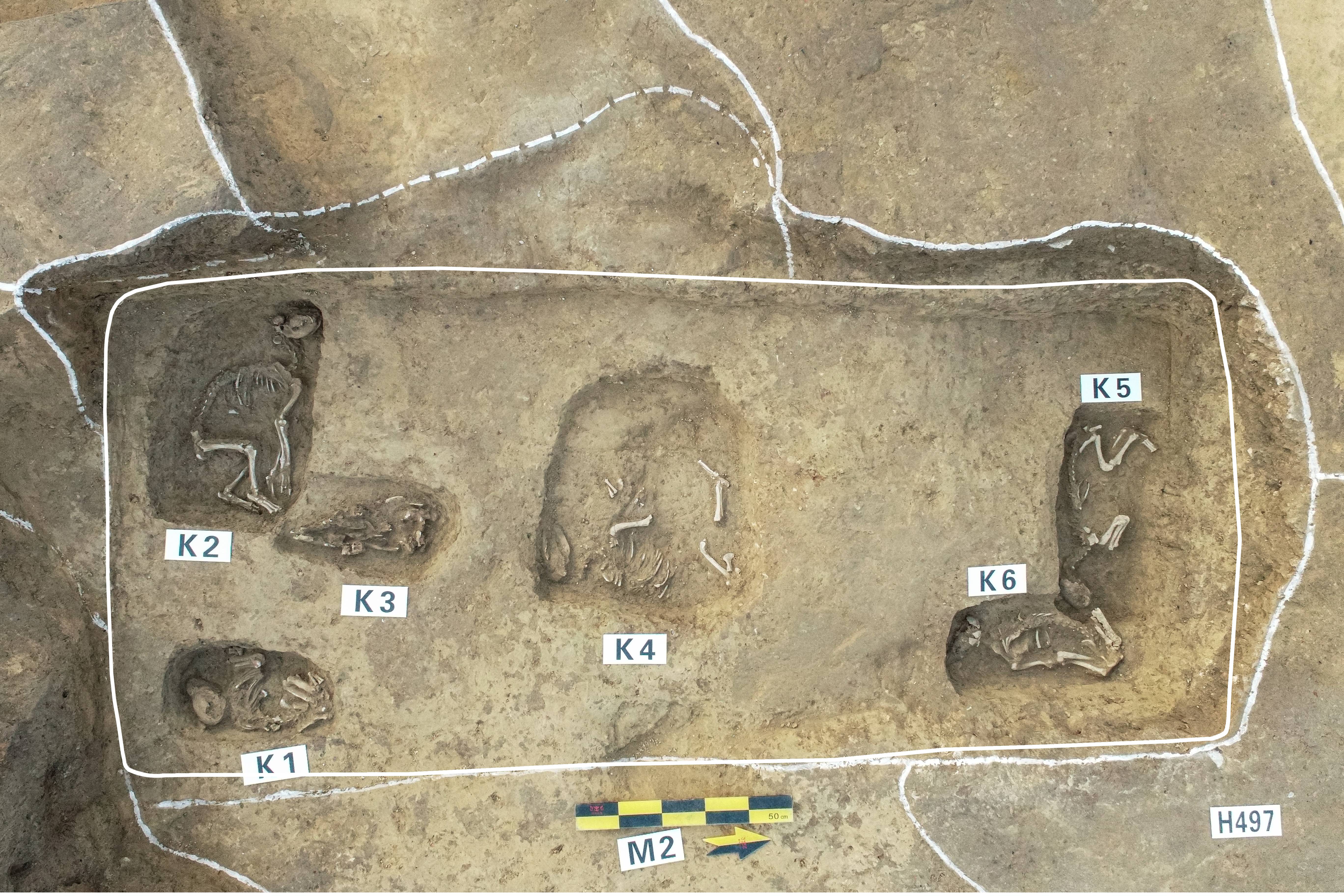
Arial photo of the Tomb 2 (M2) at The Shang Dynasty Tombs in Zhengzhou Shang City Site, Zhengzhou, Henan Province, central China. /CGTN
Arial photo of the Tomb 2 (M2) at The Shang Dynasty Tombs in Zhengzhou Shang City Site, Zhengzhou, Henan Province, central China. /CGTN
The Shang Dynasty Tombs, a high-ranking noble cemetery ruin from the mid-Shang Dynasty, are located in the southeast of the inner city of Zhengzhou Shang City Site in Central China Henan Province. The tombs are mainly distributed in the area between two trenches, and a total of 25 tombs were discovered, three of which contain unearthed bronze artifacts, six of which are suspected to be ritual pits, and the remaining 16 of which are presumed to be burial tombs lacked coffins.
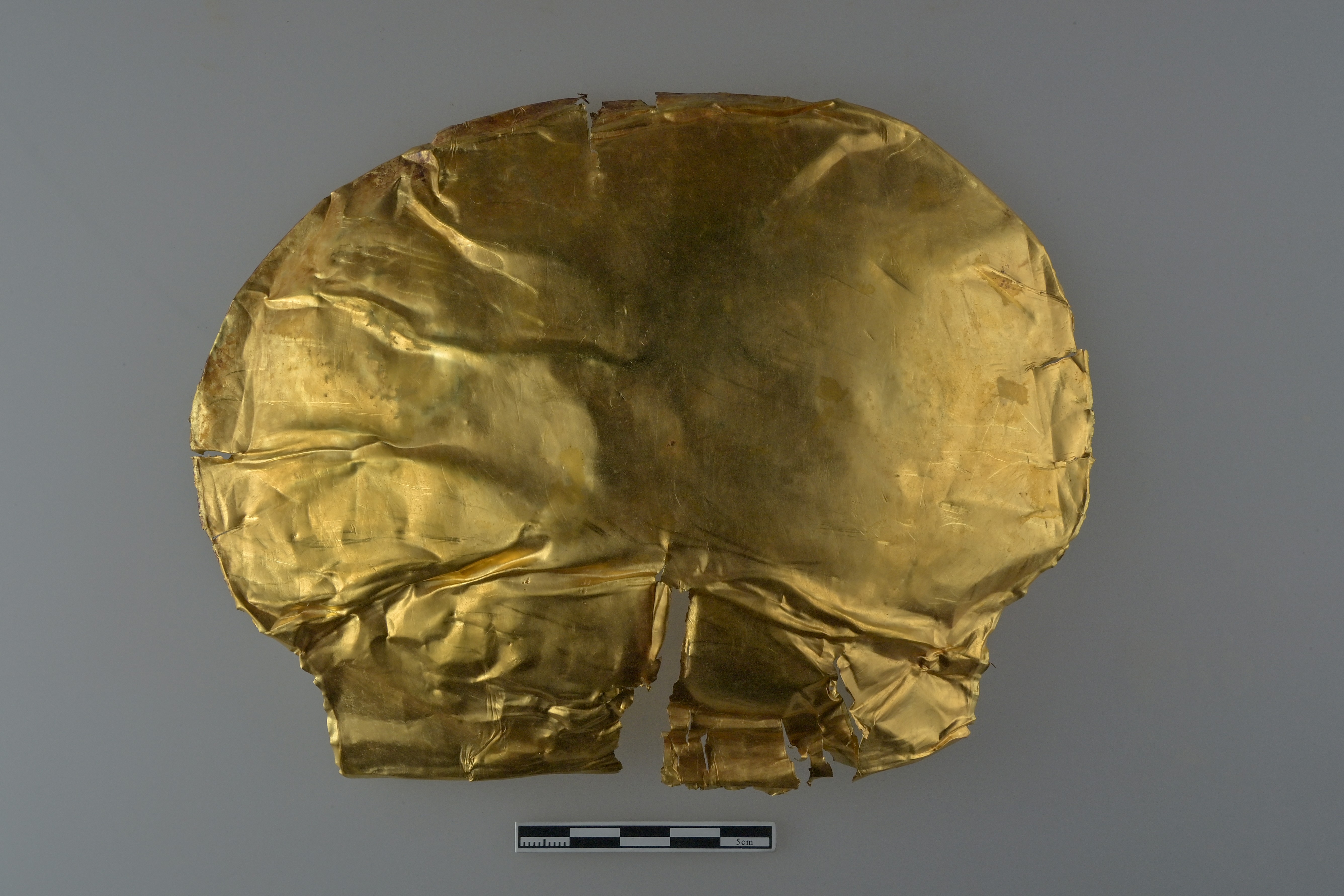
Golden burial objects unearthed from M2 at The Shang Dynasty tombs in Zhengzhou Shang City Site, Zhengzhou, Henan Province, central China. /CGTN
Golden burial objects unearthed from M2 at The Shang Dynasty tombs in Zhengzhou Shang City Site, Zhengzhou, Henan Province, central China. /CGTN
Tomb 2 (M2) has the greatest number, variety and level of burial objects unearthed so far at the Shang Dynasty tombs in Zhengzhou, with over 200 various artifacts unearthed, including bronze ceremonial vessels, weapons, jade, gold, shell coins, inlaid turquoise plaques and more.
The site further enriches the cultural discoveries of the mid-Shang Dynasty and provides crucial evidence of functional and historical development. The finding of multiple gold artifacts from high-grade noble burials is a relatively rare occurrence, showing the cultural exchanges and tight relationships that existed between East and West throughout the Shang Dynasty.

